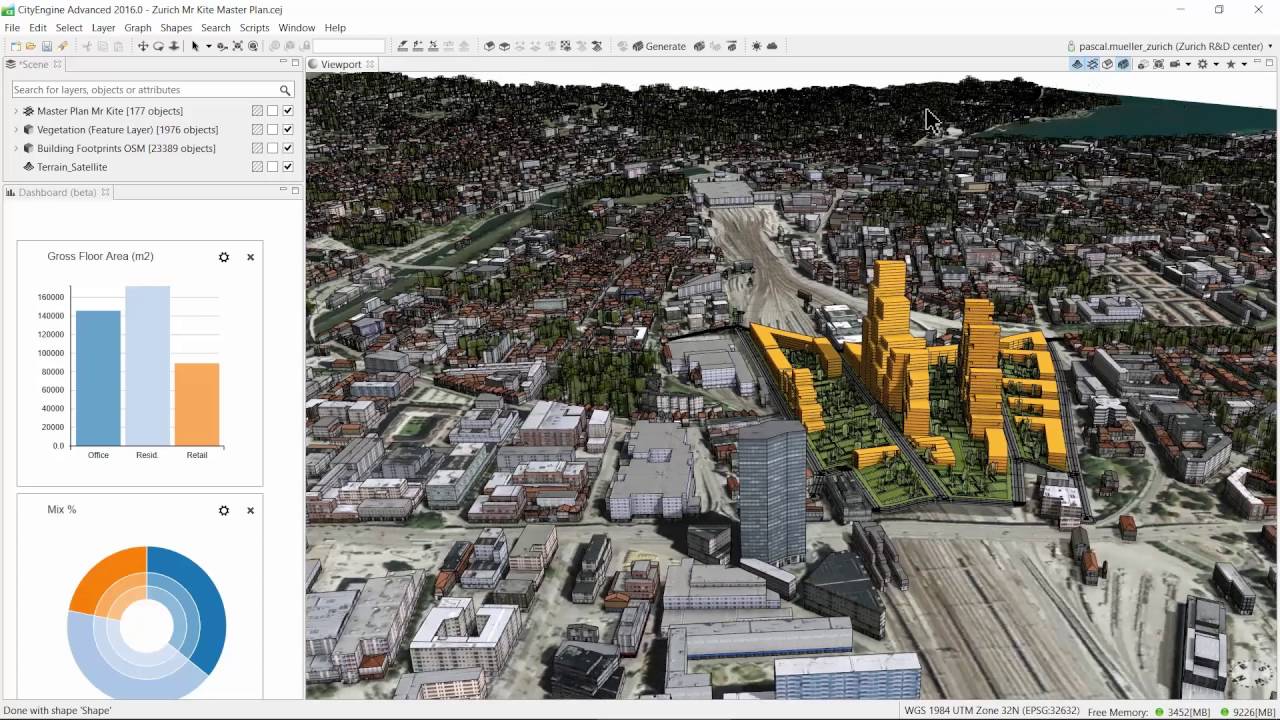

- CITYENGINE BUILDING FOOTPRINT HOW TO
- CITYENGINE BUILDING FOOTPRINT DOWNLOAD
- CITYENGINE BUILDING FOOTPRINT WINDOWS
The rule assigns default values for attributes like building height or roof type: Individual parts of the building can have different colors: the corners, the ground floor, the top floor and the floors in between can all have different colors.A flat roof can have one or more access hatches that are placed randomly. There are four types of roofs that can be applied to a building: a flat roof, a gable roof, a mansard roof, a hip roof and an M shaped roof.

CITYENGINE BUILDING FOOTPRINT WINDOWS
Using local edits on each facade and/or on each floor you can define whether to have single windows, double windows or no windows at all. Each floor has windows with adjustable width, height and depth. In some cases the height might be included in the OSM data.
CITYENGINE BUILDING FOOTPRINT DOWNLOAD
Using the Get map data functionality in CityEngine we can download the building footprints for a given extent. The starting point for this are the building footprints. (in case you already have the 3D geometry for the campus buildings you can skip this step) Display map in ArcGIS API for JavaScript.Create the basemap using the editor in ArcGIS API for JavaScript.The steps to create the classical campus map are the following: The other styles use a similar approach with small differences. There are 4 styles of maps in this repository, but this workflow focuses only on the classical style. In this readme I'll describe the technical details behind this project. While looking at various campus maps (I made a collection of campus maps on Pinterest), I was inspired to create an interactive 3D web campus map using CityEngine and ArcGIS API for JavaScript.
CITYENGINE BUILDING FOOTPRINT HOW TO
Campus maps are often a mix of art and practical information: they show where you are and how to get where you want, but they do so with playful or stylish visuals.


 0 kommentar(er)
0 kommentar(er)
